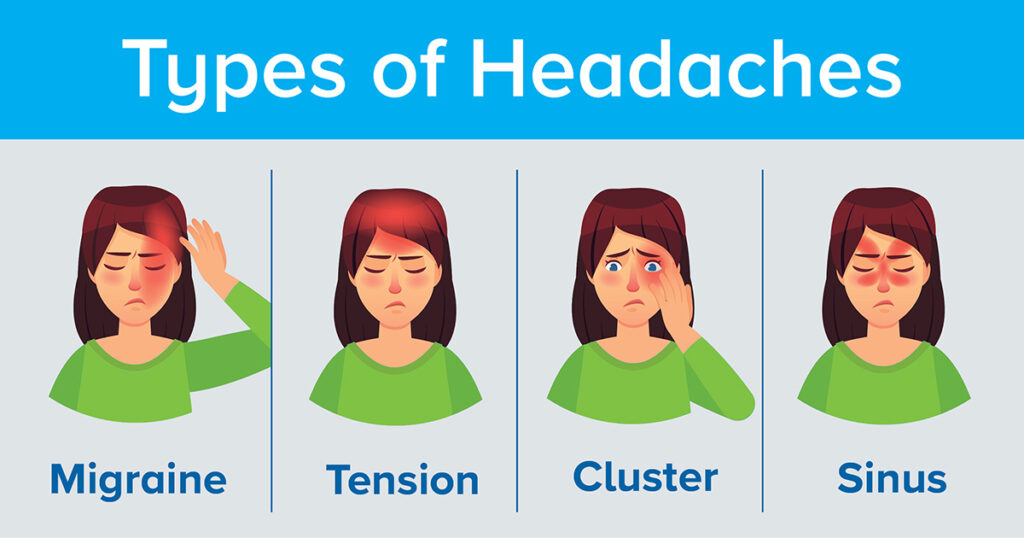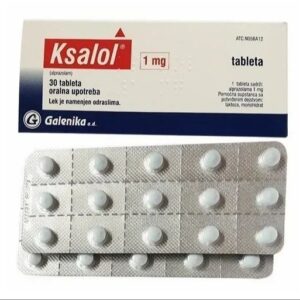Understanding Different Types of Headaches and How Medication Can Help
Headaches are a common ailment that most people experience at some point in their lives. While they can range in severity and duration, the pain can be debilitating, affecting your ability to concentrate, work, or even enjoy daily activities. Understanding the different types of headaches and how medications can provide relief is essential in effectively managing this condition.
Types of Headaches

There are several types of headaches, with their respective causes, symptoms, and treatments. Here’s an overview of the most common ones:
1. Tension Headaches
Tension headaches are the most common and are usually described as a constant, dull ache, like a tight band around the head. They are typically caused by stress, anxiety, poor posture, or muscle tension in the neck and shoulders.
Symptoms:
- Mild to moderate pain around the forehead, temples, or back of the head.
- Tightness or pressure.
- Neck and shoulder muscles are tender.
Treatment:
OTC medications such as acetaminophen, ibuprofen, or aspirin are the most common treatments for tension headache pain. A healthcare provider may prescribe stronger pain medications or muscle relaxants in more severe cases.
2. Migraines
Migraines are severe, throbbing headaches, often for a few hours up to days. The other symptoms which appear with a migraine are nausea and vomiting, with sensitivity to light and sound. Various triggers may provoke a migraine such as hormonal changes, food-related factors, stress, and environmental triggers.
Symptoms:
- Pain in the head; usually, it throbs and tends to occur on one side.
- Nausea or vomiting.
- Increased sensitivity to light and sound.
- Aura (visual disturbances like flashing lights or blind spots) in some patients.
Treatment:
Patients are treated with prescription medications including triptans, like sumatriptan, that constrict blood vessels and block the pain pathways to the brain. Preventative treatments, like beta-blockers, antidepressants, and anticonvulsants are used for patients with chronic migraine conditions.
3. Cluster Headaches
Cluster headaches are some of the most painful headache conditions. They occur in cycles and may wake people up during their sleep due to sharp, burning pain around one eye or on one side of the head. These usually last for about 15 minutes up to several hours and could appear multiple times in a day for weeks or months before abating.
Symptoms:
- Extreme sharp pain around one eye or on one side of the head.
- Red or watery eyes, nasal congestion, or a runny nose on the affected side.
- Restlessness or agitation.
Treatment:
Cluster headache patients are commonly treated with prescription medicines like triptans or oxygen therapy. Preventive treatments, such as corticosteroids or calcium channel blockers, can help control the frequency and severity of attacks.
4. Sinus Headaches
Sinus headaches result from inflammation of the sinus passages, most commonly from allergies, a sinus infection, or a cold. The pain is usually concentrated around the forehead, eyes, and cheeks and often accompanies other symptoms of sinus congestion, such as a stuffy nose.
Symptoms:
- Deep, dull pain in the forehead, cheeks, or behind the eyes.
- Nasal congestion or drainage.
- Pressure in the sinuses.
- Fever, if due to an infection.
Treatment:
For pain from sinus headaches, an OTC pain reliever with ibuprofen or acetaminophen can assist in pain relief. Use decongestants and nasal sprays and antihistamines if the headache is secondary to sinus congestion or allergy.
5. Rebound Headaches
Medication-overuse headaches, also known as rebound headaches, are a type of headache that can occur due to excessive intake of pain medications. Though they are often caused by the overuse of painkillers, they can be caused by other headache treatments too.
Symptoms:
These headaches persist and get better with medication but return after the medication has worn off. The headache occurs daily or nearly every day. Pain relief is short-lived.
Treatment:
The best way to treat rebound headaches is to cease using the pain medication causing them. A healthcare provider can guide a patient through a gradual withdrawal process and can provide alternative treatments, including preventive medications.
How Medications Help

Medications play an important role in the treatment and prevention of headaches. Which medication to use depends on the type of headache, how severe it is, and how often it occurs.
1.OTC Pain Relievers
Over-the-counter medications are usually the first line of defense for most tension headaches and mild to moderate migraines. The most common OTC pain relievers are:
**Acetaminophen (Tylenol): decreases both pain and fever.
**Nonsteroidal Anti-Inflammatory Drugs (NSAIDs): ibuprofen (Advil), naproxen (Aleve), and aspirin decrease pain and inflammation.
2.Triptans
Triptans are prescription medications specifically designed for migraine relief. They work by constricting blood vessels and blocking pain signals in the brain. Popular triptans include sumatriptan, rizatriptan, and zolmitriptan. These are typically taken at the onset of a migraine to reduce symptoms.
3.Preventive Medications
Preventive drugs will be required for patients with frequent or chronic headaches. Such medications are taken as regularly as possible to decrease the number and intensity of headaches. Examples of preventive drugs are listed below:
- Beta-blockers: Given to prevent migraines and tension headaches.
- Antidepressants: Amitriptyline and other tricyclic antidepressants help to reduce migraine frequency.
- Anticonvulsants: Drugs like topiramate prevent migraines.
4.Other Treatments
Depending on the case, some of these other treatments might be suggested:
**Corticosteroids: Used for severe cluster headaches or sinus inflammation.
**Oxygen therapy: Often used to treat cluster headaches by providing oxygen to relieve pain.
**Botox injections: In chronic migraines, Botox has been approved as a preventive treatment.
Conclusion
Since it’s complex and varied, only treatment should be determined based on an identification of the type of headache experienced. Medications are of tremendous relief, from the nonprescription pain-relievers to prescription ones, which include triptans as well as preventive medications, though one must find time with a health professional and design appropriate treatment for the right purpose by avoiding overmedication so as not to be worse than the disease.
If you are experiencing frequent or severe headaches, don’t wait to seek professional medical advice about the cause and appropriate treatment options. You can take control of your headaches by managing them with the right approach.























